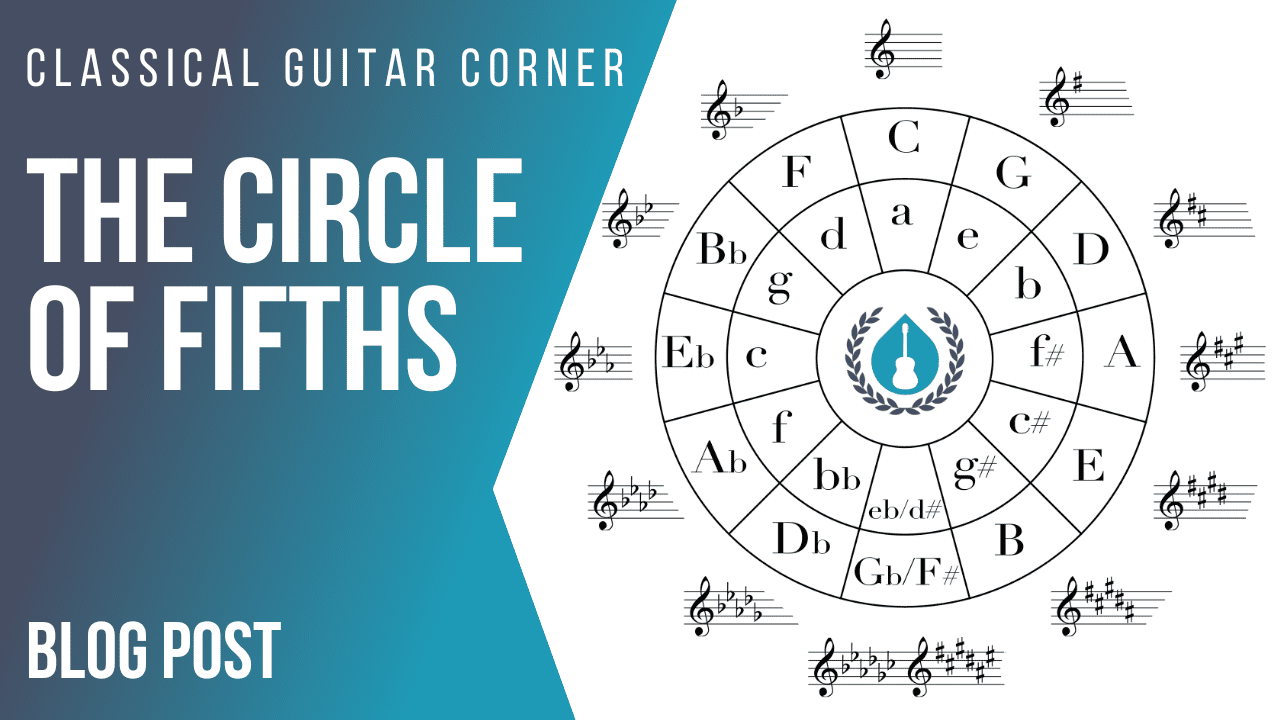In this article we’ll introduce you to the circle of fifths. What is it? Why is it useful? And how can you use it in your own music practice?
The Circle of Fifths
What is the circle of fifths? In short, it is a handy tool that shows you all 24 keys and their key signatures. It is organized in a circle moving clockwise in intervals of fifths. An interval is simply the distance between two notes. (If you go counterclockwise through the circle, by the way, it becomes a circle of fourths.) So if we move from C, at the top of the circle, to G we are moving up an interval of a fifth.
Key relationships
What’s especially useful about this circle is we can see clear relationships between keys. For instance, again starting with C Major we can see a small “a” below it — this stands for A minor. Each Major key (in capital letters) is shown above the “relative” minor key (in lowercase). A relative minor shares the same key signature (and thus the same scale) as its relative Major key, but begins and ends on a different note. Because composers often utilize Major-minor relationships, being able to see clearly what the relative minor or Major key of another key is extremely useful.
Tonic and Dominant
Moreover, because the next key moving clockwise in the circle is always a fifth away, we can easily know what the fifth, or dominant chord is for each key. Because there is such an intimate relationship between the tonic (or home) key and its dominant in classical harmony, this is valuable information. Once again, starting from C Major, the next key to the right is G Major, which is the dominant chord of C Major.
Common Chord Progressions
Another great use for the Circle of Fifths is to easily identify common Classical chord progressions. We’ve already seen the tonic-dominant relationship, which is the cornerstone of Classical harmony. Another common chord that often comes between the tonic and dominant is the subdominant, or fourth scale degree. Remember how moving counterclockwise through the circle we get a Circle of Fourths? Now we can easily see the Tonic, Subdominant (one key to the left of our home key), and Dominant (one key to the right of our home key). This gives us the most common chord progression in Classical harmony: I-IV-V.
The Circle of Fifths only shows us Major and minor triads, so some things we don’t get with the Circle of Fifths are: seventh chords, diminished chords, or extension chords. Nevertheless, it’s an extremely useful tool once you know how to read it. And now you do!
***
We hope you’ve enjoyed this introduction to the Circle of Fifths. Download our free Circle of Fifths Diagram at the link below!
We have many more theory lessons like this at Classical Guitar Corner Academy. Join CGC Academy today!


[…] let’s take a look at the Circle of Fifths. In the key of C Major, right at the top of the circle of fifths, the notes in that scale and the […]